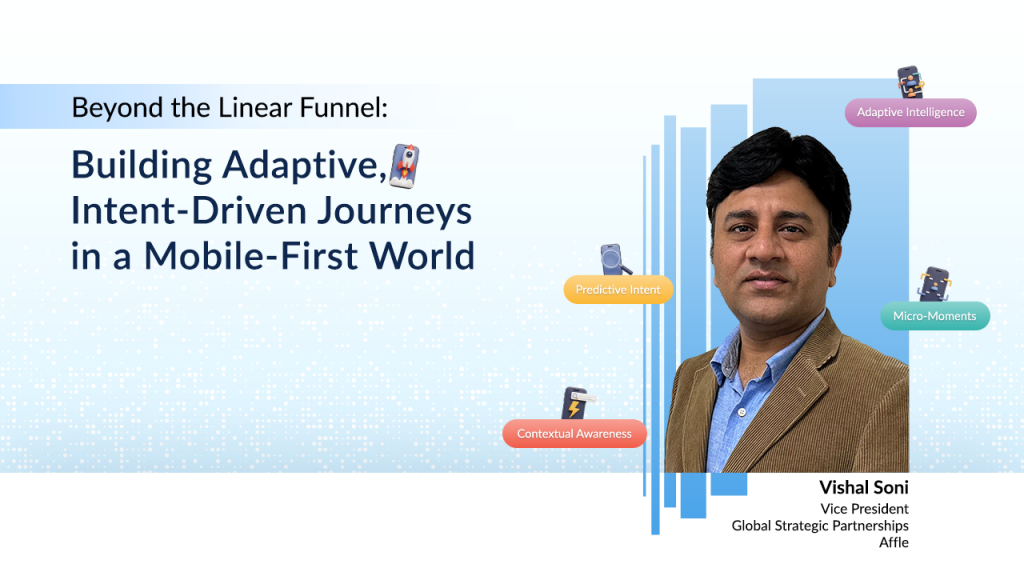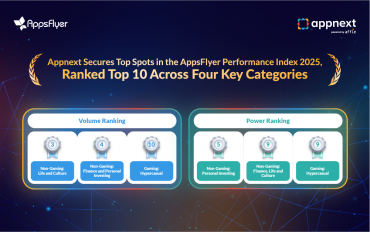In today’s adtech landscape, winners aren’t those who serve the most impressions, but those who decode intent, adapt in real time, and engage before relevance expires.
The traditional marketing funnel- awareness, consideration, conversion, is a relic of a bygone era. Built for predictable user journeys, it fails to capture the dynamic, intent-driven reality of 2025. But that funnel was built for a different era, one where user behavior followed a predictable sequence. Today, that model is obsolete as it no longer mirrors how people discover and engage with brands.
The customer journey has evolved into a dynamic, intent-driven loop, shaped by context, cross-app behaviour, real-time signals, and responsiveness. 57% of buyers complete their journey before ever speaking to a brand representative. With users spending over 5.2 hours daily on mobile apps and exposed to 6,000+ ads per day, attention is fragmented, loyalty is fluid, and expectations are real-time.
Modern users’ behaviour doesn’t follow a linear path. They hop between apps, revisit brands, and respond when contextual relevance peaks, often converting at unintuitive touchpoints. These moments of truth, where intent translates into action, are important events that feed back into the system. In adaptive marketing systems powered by AI, such conversions serve as critical feedback loops, eventually updating the context of ML models. The ability to record, measure, and isolate signals over time creates cumulative advantage. This enables sharper intent inference and more precise, value-driven interventions across the user journey.
Adaptive Discovery in Action: Appnext’s Approach
At Appnext, we’ve redefined this approach by embedding app recommendations directly into the device ecosystem via deep OEM integrations, across search modules, widgets, app folders, and other native placements. Powered by over 100 behavioral signals, these recommendations surface organically during high-intent moments, ensuring discovery feels intuitive rather than interruptive. This enables marketers to meet users exactly where intent surfaces, not where a media plan says they should.
The system surfaces a personalized set of offers via a native widget or via API, contextual, timely, and aligned with their predicted interests. Upon interaction opportunities with the user, the system acts as an intelligent guide, working to understand what a person might need at any given moment. The suggestions are generated considering the full context of the user’s unique history, their immediate surroundings, while operating on a strict foundation of privacy. The engines behind these recommendations consist of our In-house deep neural networks that are continuously trained on billions of past data points that originated from past relevant interactions and analyze a rich multidimensional feature space of each event. The network provides a robust statistical estimation that matches the user with the offer that will result in the best probability of engagement. We constantly refine every element of these interactions through rigorous randomized controlled trials (AB testing) that test delivery modes (e.g., push vs. in-app) and message framing (e.g., urgency vs. utility), closely monitoring conversion lift, retention, time-to-conversion, and other engagement metrics.
Why Adaptability Matters—Especially in Mobile-First Regions
In regions like India, LATAM, and Southeast Asia, and beyond, where mobile is the primary digital gateway, adaptive strategies are essential to counter rising user acquisition costs and the inefficacy of outdated advertising models.
For Gen Z-focused e-commerce brands, leveraging native on-device placements to surface flash sale prompts during peak moments of user intent is key. This approach interprets a rich spectrum of behavioral signals, ranging from usage patterns and post-install events to engagement drop-offs and contextual cues, to identify and act on high-conversion opportunities.
Clustering user response patterns further surfaces high-performing cohorts, like deal-seekers or late-night browsers, allowing the system to adapt with measurable precision at scale. In these fast-moving, mobile-first markets where legacy playbooks falter, this AI-driven approach transforms casual installs into long-term users through relevance, experimentation, and data-backed iteration.
Building for the Now, Not Just the Funnel
As we move deeper into 2025, it’s clear that conversion is no longer a milestone; it’s a continuous exchange. Brands that succeed will be those that design adaptive systems, ones that listen, learn, and respond at the speed of user intent.
At Appnext, we’re committed to helping marketers navigate this evolution. By unifying behavioral intelligence, OEM discovery, and full-funnel attribution, we equip brands to stay relevant in real time, driving outcomes that reflect how users behave today, not how they used to.
“Relevance isn’t about being everywhere, it’s about showing up where it matters most. In a world of constant noise, intent, precision, and timing are what drive real outcomes.”
— Vishal Soni, Vice President – Global Strategic Partnerships, Affle




Comments are closed.